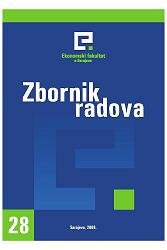Mjerenje riziko averzije
Measuring risk aversion
Author(s): Azra ZaimovićSubject(s): Economy
Published by: Ekonomski fakultet u Sarajevu
Keywords: financial risk; investments; risk aversion; Markowitz's risk premium; Arrow-Pratt's coefficients of risk aversion;
Summary/Abstract: The research in this paper focuses on the way of measuring the investor's risk aversion. A risk-averse investor is someone who, given the choice between two investments with the same expected return, will always choose the less risky investment. The main measures of risk aversion are the Markowitz's risk premium, represented by the difference between the expected utility of hazard and investor's certainty equivalent, and the Arrow-Pratt's coefficients of absolute and relative risk aversion, which are based on the second derivative, or the degree of curvature of utility function, depending on absolute or relative change of investor's wealth. This paper also investigates what functions are the best candidates for utility function, i. e. what functions describe the investor's behavior on capital market the best. This analysis includes quadratic, logarithmic and power function. The most frequently used utility function in portfolio management is the quadratic function.
Journal: Zbornik radova Ekonomskog fakulteta u Sarajevu
- Issue Year: 2008
- Issue No: 28
- Page Range: 375-392
- Page Count: 18
- Language: Bosnian

